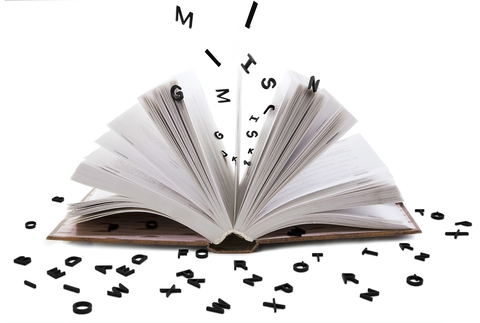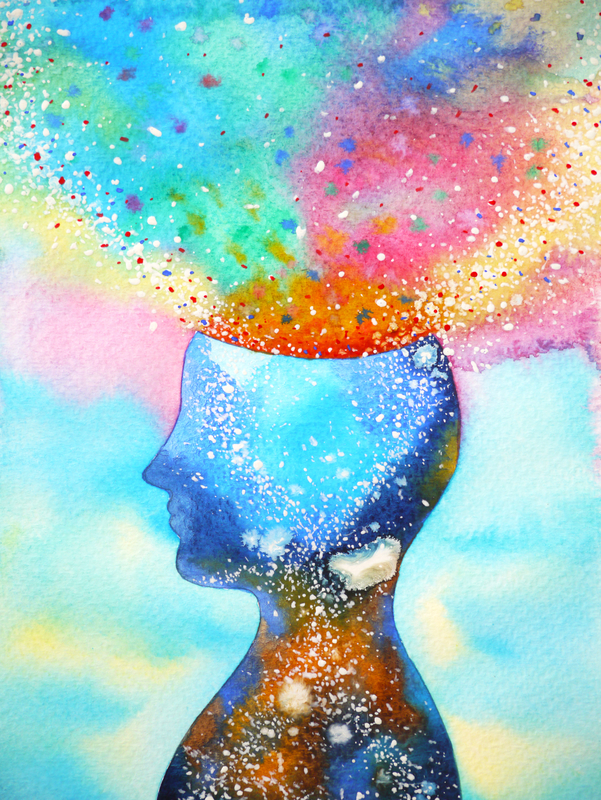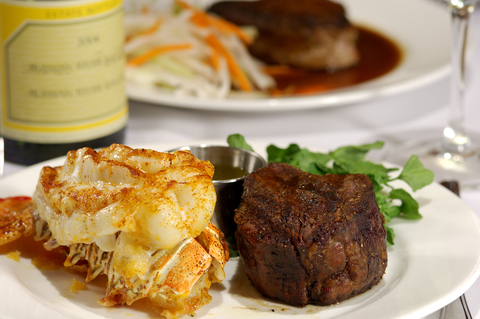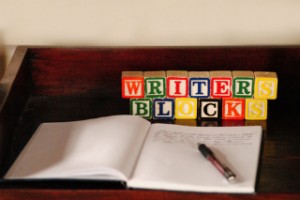In order to read critically, you should know the correct terminology of a work of literature–a novel, memoir, autobiography, history, etc. Here are 9 terms every reader should know before they start reading.

- Title: the title is what the book is called; its name, if you will. A good title should summarize, describe, or entice. It should resonate both with the work inside and with the reader.
- Characters: the characters are the beings in the book, whether they are human, animal, or even inanimate objects. You can learn about these characters through their appearance, their personality, their situation, and the actions they take throughout the story. You can also find out about them by what the author says about them, by what the characters say in dialogue, their movements and actions as they react to their situation. There are four basic types of character in a work: a) Protagonist: this is the “hero” or “sympathetic device to drive a story.” The protagonist is the character most of the situations are happening to. b) Antagonist: this character or force is there to thwart the protagonist’s desires and dreams. They are there to create conflict, without which you have no story at all. c) Confidants: these characters, one of which is the sidekick, are there to support the protagonist’s goal and help them achieve it. d) Love Interest(s): This is the most common type of sub-plot and character. They are the ones who show the protagonist’s vulnerabilities and strengths. This will allow the writer to place stumbling blocks in the protagonist’s way and create even more conflict.
- Setting: the setting is where, when, and in what social context the story takes place. It is often the backdrop but can move to the foreground and become a character in some stories. Setting gives readers a framework for the story so they can identify better with the characters and their world.
- Theme: the theme is the central idea within the story. It generally sends a message, which may show you the beliefs and opinions of the author. Theme is usually revealed through the next term, plot. You can find the theme by asking yourself “What did the protagonist learn?
- Plot: the plot is what happens, a sequence of events that tells the story Most plots occur chronologically, but some have flashbacks to the past and may even jump forward to the future. Here’s how you know you have a plot: An inciting incident taken by the antagonist has negative effects on the protagonist. This action creates a problem that must be solved by the protagonist. This becomes the story goal, the pursuit of which leads to confrontations (conflict) until the protagonist either achieves or fails to achieve the goal. Plots also generally have one or more sub-plots that add texture by showing different perspectives of the main conflict of the story and different aspects of the protagonist’s personality. Sub-plots also test the protagonist’s resolve to achieve their goals.
- Style. this is how the author writes the story. Each writer has their own individual style of writing which can usually be identified by their readers. The author’s word choice, sentence structures, and figurative language choices will describe their style, which will then create the mood, images, and meaning of the story. Style is also guided by the genre the author is working in, the viewpoint they choose for their story, and their intended audience.
- Tone: this is the atmosphere or mood of the story. Tone is “the use of words and writing style to convey an attitude towards a topic. Tone “is expressed through word choice, viewpoint, sentence length, and punctuation.” Tone can be said to be how the author feels.
- Mood: this is how the reader feels. The author uses atmosphere to affect the reader emotionally and psychologically, usually with style and tone. Setting is also often important to the overall atmosphere.
- Intention: One question you want to ask yourself is “Why did the author write this? What was their purpose?” The success of a book is often judged by how well it achieves its purpose, whether that is to entertain or to inform.
Knowing and understanding these terms will help you to read on a deeper level and to question what you’ve read, making it mean more to you.
Here is a list of writing prompts I found several years ago. It’s called 100 Tales and the idea is to write a story (flash or regular sized) about each prompt.

001. Thunder.
002. Hail.
003. Snow.
004. Rain.
005. Sun.
006. Moon.
007. Stars.
008. Sky.
009. Clouds.
010. Wind.
011. Sunrise.
012. Sunset.
013. Red.
014. Blue
015. Black.
016. Green.
017. Yellow.
018. Orange.
019. Purple.
020. Grey.
021. White.
022. Pink.
023. Brown.
024. Silver.
025. Spring.
026. Summer.
027. Autumn.
028. Winter.
029. Christmas.
030. New Year.
031. Valentine’s Day.
032. Thanksgiving.
033. Birthday.
034. Anniversary.
035. Birth.
036. Death.
037. Seconds.
038. Minutes.
039. Hours.
040. Days.
041. Weeks.
042. Months.
043. Years.
044. Dawn.
045. Dusk.
046. Past.
047. Present.
048. Future.
049. Love.
050. Comfort.
051. Kisses.
052. Hope.
053. Home.
054. Pleasure.
055. Kindness.
056. Together.
057. Light.
058. Life.
059. Trust.
060. Peace.
061. Hatred.
062. Hurt.
063. Despair.
064. Hopeless.
065. Leaving.
066. Pain.
067. Destruction.
068. Apart.
069. Dark.
070. Embarrassment.
071. Lies.
072. Broken.
073. Colour.
074. Decisions.
075. Rules.
076. Betrayal.
077. Passion.
078. Truth.
079. Loyalty.
080. Forgiveness.
081. Risk.
082. Nature.
083. Questions.
084. Watching.
085. Anger.
086. Choices.
087. Answers.
088. Thought.
089. Desire.
090. Travel.
091. Assignment.
092. Loss.
093. Caring.
094. Duty.
095. People.
096. Barrier.
097. Speed.
098. Fly.
099. Knowing.
100. Writer’s Choice.
So as a side hustle, I come up with plots for ghost writers for a romance publisher. We started out with Victorian plots, but lately Mail Order Bride stories have started selling well, so we’re trying some of those on for size.

There’s a definite formula for these plots. You have to start in a large Eastern city like Boston or Chicago or New York. You must have some sort of horrible reason the young lady wants to become a mail order bride, like a relative is trying to subject her to a fate worse than death or she is penniless and cannot pay the next month’s rent. Then you must have some reason for the two not to get married immediately so there is plenty of romantic conflict (or you can have them marry but hate one another at first). Finally, you need one final horrible event that nearly convinces the two star-crossed lovers that everything is going to fail miserably. Only then can they be together.
I enjoy coming up with romance plots, though I can’t imagine sitting down and actually writing out the whole 50,000 word novel. Maybe that’s my problem though – maybe I ought to start trying to sell romance …
I have a lot of trouble making sure I have enough conflict in my plots. I tend to like “caper” stories, where the characters proceed in a fairly orderly fashion through a series of hoops, resulting in their final arrival at the end of the obstacle course. However, today’s readers demand more of a novel, no matter what genre it may be in.

To start with, what exactly is conflict? Simply put, it’s what keeps the protagonist from attaining their goals. But what does that mean? Conflict is anything (or anyone) that gets in the main character’s way as they chase after whatever it is they think they need out of life. Notice that’s what they THINK … their goal is usually not what they actually need, or not if you’re writing a good story. The main character’s goals must change as they grow throughout the story, so that at the end, what they thought they needed wasn’t at all appropriate for them.
Tension and conflict go hand in hand, too. Tension is what happens when the reader knows something that the protagonist doesn’t. It’s what keeps the reader sitting on the edge of their seat, near-frantic to see what’s going to happen next and how the character is going to get out of it. If you have a logical series of conflicts, the tension will be there. If your conflict is contrived, though, you may struggle to find the tension needed to keep your reader enthralled.
One way to think up a good conflict is to ask “What, logically, should happen next?” Make a list if you want to–the more logical steps you can list, the better. Now, take a good look at your list–and veer off to one side in a plot twist! For example, if your character is determined that all they need in life is a comfortable life with regular meals, their favorite chair, a cozy fire, and a good book, your job as a writer is to make sure their life is nothing like that for the duration of the story. In fact, you may want to make certain they end up loving adventure instead.
Take your comfort-loving protagonist and ask “what would logically get them out of their cozy chair into the wide world?” Let’s say they’re tricked into joining a group of adventurers–but, more interestingly, let’s say they’re tricked when an old, family friend volunteers their services as a professional burglar! The adventurers show up, making their assumptions about our protagonist and his character, and chaos ensues. Now, what, logically, would happen next? Our hero will throw the lot of them, including the old, family friend, out the door and lock it behind himself, right? But what if he finds himself feeling the tug of the wild goose instead? What if a sudden longing to see mountains arises in his soul? Suppose he says “I’ll go along, just for a bit, and see something of the world.”
Now, you’ve got him out of the house. The rest of the story is a series of questions and plot twists you create in order to keep him from backtracking to that cozy fireside. Only at the very end of the book can the character return to their previous life–only to find it’s changed noticeably since they left home. If you create logical conflict, your story will flow right along from beginning to end, dragging the reader along with it.
The best meal I ever ate was at a now-defunct Greenville restaurant, one of those “10 Year Anniversary” restaurants that cost a couple hundred dollars for a meal for two. The dessert was one of those chocolate things that melted when they poured hot caramel over it, to reveal the actual dessert under the chocolate shell.
As a fiction writer, I often write about food, especially as my characters go about their daily lives. Meals aren’t something you spend a lot of time describing — that ends up sounding like a food critic’s post instead of fiction — but you should be able to give a good, solid feel for them within a sentence or two.
Remember to use all five senses as much as possible. How does the food smell? Does that roll crunch as you bite into it? Does the steam from your coffee rise to join the cigarette smoke near the ceiling? What about the texture or feeling of the food in your mouth? And don’t forget taste!
What I usually do is set the scene, then describe the meal as the characters talk and act. This furthers the story while also giving depth to the scene.
Here’s a little sample:
Once inside, he took a deep breath. At least the place smelled more of meat and potatoes than grease and burned bread. Perhaps they’d survive their culinary expedition. John led the other youngster to the end of a table and sat where he could see the door. Millie, or one of her cohorts, sauntered over. She poured coffee, and they ordered the daily special.
John studied the freckled face of his companion: still a trace of baby fat, a few sparse hairs below the beaky nose, and a scattering of pustules across the forehead.
He smiled. “You’re what, fifteen? Out on your own and ready to get out of town, same as me.”
The blue eyes narrowed once more. “I’m fourteen. How’d you figure all that?”
“Kid, you don’t want to know what all I can tell just by looking at a person.” John leaned back and sipped his coffee, trying to pretend he liked the flavor. “I figure you haven’t been eating too regular, either. You got work waiting in Colorado?”
The kid scowled. “I don’t think you really need to know my business. How old are you, anyhow?”
John waved the question away. “I’m old enough to be out on my own. It’s an advantage, in my line of work, to look younger than I am.”
As he’d planned, the kid’s attention was diverted. “What kind of work could anybody our age be doing?”
“You’d be surprised, kid,” John said. He allowed himself a little smirk. The waitress set a plate in front of them. He waited until she left to resume the conversation.
“So do you have work waiting, or are you headed to Colorado on a whim?”
He glanced over at the kid as he sawed into his slice of beef. The suspicious scowl on the other’s face triggered his Totally Blameless Face. He gave the kid a wide smile.
“I only ask because I’m headed out West myself, and it occurs to me that a partner might be a definite asset.” He waited until the other put a spoonful of stew into his mouth before he added, “Besides, a kid like you could use an experienced man of the world to show him the ropes.”
Here are the links to my posts on putting action into your story:
Here are the links to my previous posts on plotting your story:
I’ve done NaNoWriMo several times. Not consecutive years … it seems to work out that I write one book, then use the next year to polish and edit it. However, it’s a great way to get the first 50,000 words down.
Yes, I did say “the first 50,000.” Technically, 50K is a novel, but most of today’s fiction runs more to the 85,000 word size rather than being shorter.
National Novel Writing Month takes determination, of course. It’s not easy to get 50,000 words down in 30 days while holding down a full-time job. I often wish I’d win the lottery so I could devote my days to writing instead of having to interrupt my virtual life with reality.
If you’re thinking about NaNoWriMo yourself, here are some pros and cons to help you decide.
Pros:
- 50,000 words down – that’s either a full novel or a very good start on a longer one
- That sense of accomplishment you get from fulfilling a promise
- The knowledge that you actually can write a novel in 30 days
- Fun virtual prizes from the NaNoWriMo website and some nice discounts on writing software
Cons:
- 50,000 words in 30 days – a grueling pace, especially if you write slowly
- Discipline, discipline, discipline – you really need to write nearly every single day, not skip days and try to “catch up”
- Give up the idea of having an outside life for the month of November
- Not much understanding from anybody who’s not a writer
Good luck to you if you decide to attempt NaNoWriMo!
Current word count: 30,433 …
and I’ve just come up with a major subplot for the lads
Thought I’d discuss the two basic types of writers this post. Well, actually there are three, because I believe you can be a combination.
Plotter:
A plotter is a careful planner, a writer who outlines the entire novel ahead of time. A plotter sometimes writes such a thorough and detailed outline that it’s practically a novel in itself. Some plotters outline down to the scene level, while others simply write rough ideas for each chapter.
If you’re a plotter, you know what’s going to happen next. This helps prevent writer’s block and gives you a target. However, if you get stuck or decide to change something, you often find that you must redo your entire outline.
Pantser:
A pantser is a writer who writes “by the seat of your pants,” without an outline. Pantsers just like to start writing and see how it goes, letting the characters loose to do as they choose and to pick the direction of the story.
If you’re a pantser, you have the freedom to change anything at all, at any time you so choose. However, not knowing where you’re going sometimes means you get stuck. Many pantsers have strings of unfinished projects trailing along behind them.
Plantser:
I believe that you can be a combination of both extremes, and NaNoWriMo agrees with me, for it’s come up with this designation this year. A plantser is a writer who has a basic idea where the story is going, but likes the freedom to explore tangents. Plantsers usually have a rough outline of some sort, or at least a vague idea of the plot.
I think this is the best of both worlds. You’ve got the road map, but you’re giving yourself the opportunity to try different routes along the way.
Coming up with new story ideas is easy for some writers – they have trouble narrowing their ideas down to just one!
However, some writers have more trouble figuring out a good plot to go with their characters. For those who do, here are some tried and true tips:
- Ask “what if?” – look at any ordinary situation and imagine what would happen if …. What if the blind date that man is waiting for at the table next to yours turns out to be a psychopath — or his soulmate? What if that off-the-beaten-path trail leads to a murder scene? What if the train derails just as it pulls into the station?
- Finish this quote: _____ was not what it seemed. You can make an unlimited number of stories this way. The new neighbors were not what they seemed. The charming hotel was not what it seemed. The road trip was not what it seemed.
- Finish this quote as well: If only she/he hadn’t ______. This is another practically infinite prompt. If only he hadn’t taken that short cut. If only she hadn’t tried that new restaurant. If only they hadn’t decided to vacation here.
- Eavesdrop. This is always a great way to get story ideas. You hear the oddest things in a public location, and any one of them could turn into a great story for you.
- Reinvent a scene from a book or movie. Take an insignificant scene from a book or movie and imagine that as the opening scene for your story.
- Surf the net. Type a subject into your search engine and just start clicking anything that looks interesting. You’re bound to come up with something that stirs your imagination pretty quickly.
- Catch up with the news. Watch online or on TV, or read the newspaper. Something’s sure to catch your eye and trigger your emotions.
These aren’t all the ways a writer can come up with great story ideas, of course, but they’re ones that have always worked.
What are your tried and true idea generating ideas?





